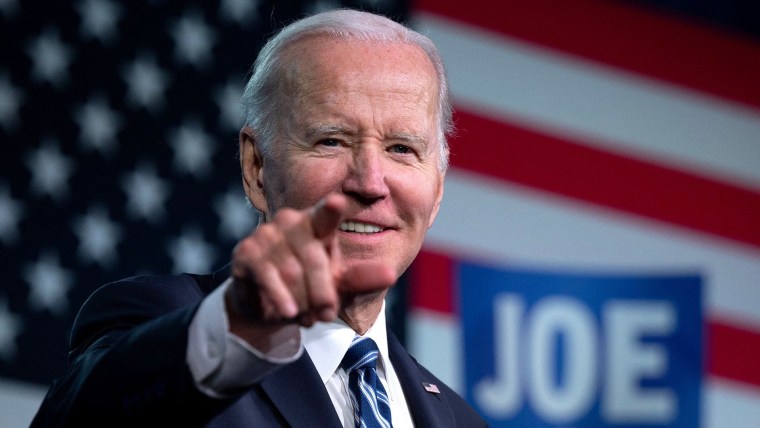[ad_1]
WASHINGTON — Now and then, a few intrepid White House speechwriters will wage a quiet battle to kill the State of the Union address as we know it — or at least shrink it so it’s no longer the stylized piece of theater it has become.
Worrying that the annual speech has grown stale, presidential aides over the years have sought to shake it up. They’ve considered pulling it out of the Capitol and moving it to heartland states, shortening it by two-thirds or sticking to just a single theme. But inertia would always take hold. No president wants to give up the pomp and ceremony, much less the millions of eyeballs trained on him, as he strides through the House chamber after the ringing eight-word cue: “Mr. Speaker, the president of the United States!”
The state of the union may be strong or getting stronger. But the state of State of the Union address is immutable. It’s not about to change.
“It’s one of the biggest audiences a president commands,” said Kathleen Sebelius, a Cabinet secretary in Barack Obama’s administration. “With a captive audience and people all tuned in at the same time, it’s an opportunity to get across themes and messages that are so important in setting a tone.”
Joe Biden’s speech Tuesday night in many ways is expected to mirror every speech delivered by every president since Ronald Reagan perfected the formula in the 1980s. There will be all the old conventions: the call-out to guests in the House chamber, the self-congratulatory list of accomplishments and the solemn promise to tackle what remains unfinished.
Lawmakers from the president’s party will stand and applaud throughout, while the opposing party largely will sit still.
Nothing says the address has to unfold this way. Article II, Section 3 of the Constitution merely holds that the president shall “from time to time give to the Congress information of the State of the Union, and recommend to their consideration such measures as he shall judge necessary and expedient.”
In 1913, President Woodrow Wilson gave his report in person rather than in writing — reviving a tradition that had lapsed with John Adams in 1800. Not everyone was happy to see the in-person model make a comeback.
“I regret this cheap and tawdry imitation of English royalty.”
Sen. John Sharp Williams in 1913
“I am sorry to see revived the old Federalistic custom of speeches from the throne,” sniffed Sen. John Sharp Williams of Mississippi, as recounted in Arthur Schlesinger’s three-volume history of the State of the Union address. “I regret this cheap and tawdry imitation of English royalty.”
Misgivings about the speech only grew as it assumed its modern form, sparking something of a rebellion among the White House aides tasked with writing the thing every year.
In 1998, Jeff Shesol, a speechwriter in Bill Clinton’s White House, wrote an internal memo calling for a shorter, tighter speech that focused on one important idea.
No one listened.
“I was essentially patted on the head and told, ‘You’re adorable,’” Shesol recalled.
If anything, the bloat worsened. Two years later, Clinton delivered a speech that clocked in at an hour and a half — the longest State of the Union address on record. At 9,000 words, Clinton’s speech was nine times as long as the first address, delivered by George Washington in 1790.
“The speech has been an increasingly bankrupt exercise for generations now,” Shesol said. “It has felt increasingly rote, often exceedingly empty and removed from the reality of our national and political life.”
Viewership has been tailing off. Biden’s first State of the Union speech drew an audience of 38 million. By contrast, Clinton, George W. Bush, Obama and Donald Trump attracted 45 million to 52 million in their maiden addresses.
Attendance among Supreme Court justices, who are invited every year, has also been dropping. Chief Justice John Roberts complained in 2010 that the speech had devolved into a “pep rally.”
“I’m not sure why we’re there,” Roberts said.
Neither are his colleagues. Four of the nine justices skipped the event last year.
One rationale for dumping the speech in its current form is the heightened political polarization in American life, former White House officials say. Watching from home, Americans are apt to view the address along ideological lines that have calcified. A study in 2020 found that partisan divisions in the U.S. had grown more rapidly over the past four decades than in other large democracies, including the United Kingdom and Canada. In the late 1970s, a typical American rated his or her party 27 points higher than the other major party. By 2016, that figure had jumped to nearly 46 points.
In these fractious times, it’s simply unrealistic to believe that the president can deliver a national message that will soften such divisions and truly unify the nation, veterans of past White Houses say.
The speech “basically reinforces the divisions within the country, as opposed to broadening support in the country for what a president wants to get done,” said Leon Panetta, a White House chief of staff under Clinton and later a Cabinet secretary in Obama’s administration.
[ad_2]
Source link

